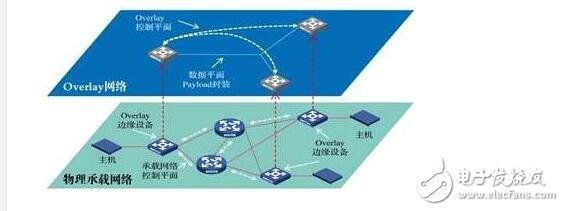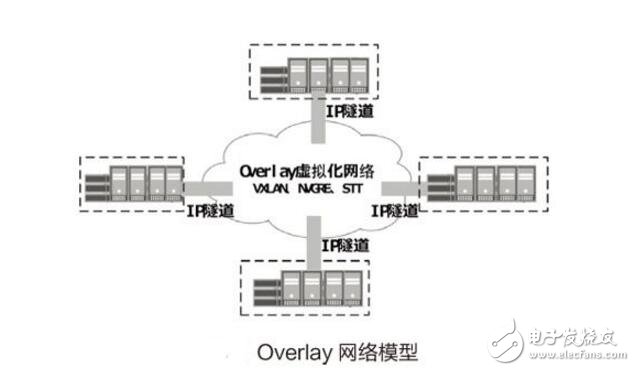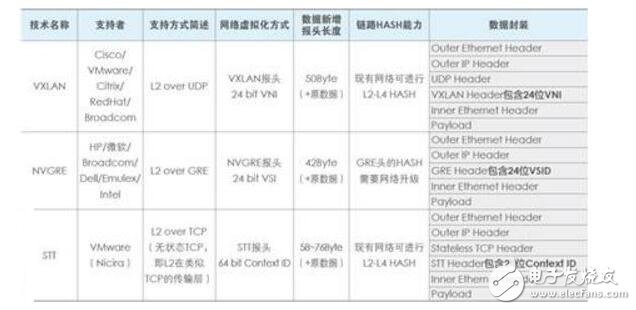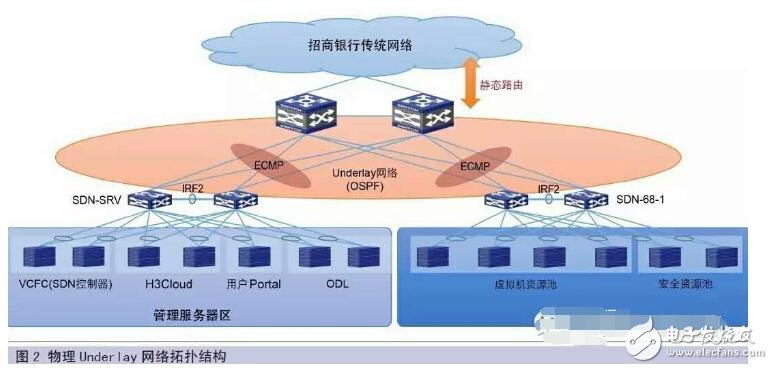**Overlay Network**
In the field of network technology, an overlay refers to a virtualization model that is built on top of the existing network infrastructure. The main idea is to implement applications without making major changes to the underlying network, while still allowing communication with other networks. This approach separates the business logic from the basic IP-based network infrastructure. Essentially, overlay technology creates a virtual network on top of the physical network, and the applications only interact with this virtual layer.
The overlay network consists of three main components:
- **Edge device**: These are the devices directly connected to virtual machines.
- **Control plane**: Responsible for establishing and maintaining virtual tunnels, as well as notifying hosts about reachability information.
- **Forwarding plane**: The physical network that carries the overlay packets.

Overlay technology can be categorized into three types: network overlay, host overlay, and hybrid overlay. Network overlay involves extending and constructing the edge network using control protocols, which is the focus of this discussion. Common tunneling technologies used in overlay networks include TRILL, VXLAN, GRE, and NVGRE. TRILL is a new ring network technology promoted by telecom vendors, while NVGRE and STT are technologies developed by IT companies. VXLAN, being a widely known tunneling protocol, is based on UDP and has high maturity. These protocols require upgrading existing network devices to support them.
One of the key advantages of overlay networks is their flexibility. They can be deployed anywhere, and network devices can be plug-and-play, automatically configured, and run without manual intervention. The underlying network remains unaffected when overlay services change, and traditional networks are rarely modified. Both virtual machines and physical servers can access the overlay network seamlessly.

Currently, the most popular overlay technologies include VXLAN, GRE/NVGRE, and STT. These Layer 2 overlay technologies encapsulate Ethernet packets within tunnels. The main differences lie in how the tunnels are constructed and managed, but all rely on IP-based forwarding at the bottom layer. A comparison of these technologies shows that VXLAN has a clear advantage due to its use of UDP and widespread adoption.

**Underlay Network**
The underlay network forms the foundation of today’s data center architecture. It is essentially the physical network that enables communication between devices. Ethernet was originally designed as a distributed network, with no central control node. Devices learn network reachability through protocol exchanges and make their own forwarding decisions. This decentralized nature leads to a lack of centralized traffic control and management.
To ensure interoperability across all network devices, a common language—network protocols—is required. RFCs define these protocols, acting like international laws that all vendors follow to maintain global network stability. The underlay network includes all traditional networking technologies and can be improved through enhancements in physical equipment, scaling the number of devices, and increasing bandwidth.

Unlike overlay networks, the underlay operates at the physical level and is not affected by the virtual layers above it. It focuses on the direct transmission of data between endpoints. While it may be more rigid compared to overlay solutions, it provides a stable and reliable foundation for modern data centers.
Steel poles are commonly used to carry several types of electric power lines, distribution lines and lighting system. Distribution lines carry power from local substations to customers. They generally carry voltages from 4.6 to 33kV for distances up to 30 miles, and include transformers to step the voltage down from the primary voltage to the lower secondary voltage used by the customer. A service drop carries this lower voltage to the customer's premises.
Lighting Pole,Street Lighting Poles,Traffic Signal Light Pole,High Mast Lighting Poles
Yixing Steel Pole International Trading Co., Ltd , https://www.yx-steelpole.com